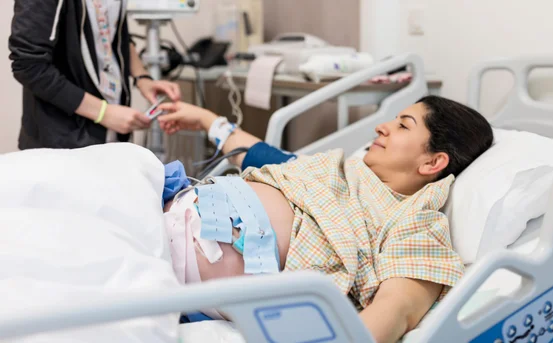Introduction
Arthrodesis, commonly referred to as joint fusion surgery, is a procedure used to permanently join two or more bones in a joint. This fusion eliminates movement in the affected joint, which can significantly reduce or even eliminate pain caused by arthritis, deformities, or traumatic injuries. The goal of this surgery is not to improve flexibility but to stabilize a painful or unstable joint and restore function through the elimination of movement.
This surgical approach is typically considered when non-surgical treatments such as physical therapy, medications, and assistive devices fail to relieve symptoms. While losing motion in a joint may seem like a downside, for many patients, it means the difference between living with constant, disabling pain and enjoying a more functional life. Arthrodesis can be performed on various joints, including the spine, ankle, wrist, fingers, and thumb.
Let’s take a closer look at the conditions and situations when is arthrodesis surgery is needed and when it becomes not only an option but a medical necessity.
When is Arthrodesis Surgery Needed
- Severe Joint Arthritis :- One of the most common reasons for arthrodesis surgery is end-stage arthritis that has not responded to conservative management. In cases of osteoarthritis, rheumatoid arthritis, or post-traumatic arthritis, the joint surfaces become so worn down that bones rub together, causing intense pain and inflammation. Patients with advanced arthritis often experience chronic pain, swelling, and reduced range of motion. When joint replacement is not viable either due to a high risk of implant failure, the patient’s activity level, or the small size of the joint (such as in the wrist or fingers) arthrodesis is often the preferred solution. By fusing the bones, the painful friction is eliminated, providing lasting pain relief. Although joint movement is sacrificed, many patients report a substantial improvement in quality of life because the pain is no longer constant and debilitating.
- Joint Instability :- Joint instability is another major indication for arthrodesis. This instability can arise from ligament injuries, chronic dislocations, or deformities that make it difficult for a person to bear weight or use the joint effectively. For example, in cases of severe ankle instability where ligaments have been torn or stretched beyond repair, the joint may give out during walking or standing. This can increase the risk of falls and injuries. Arthrodesis helps by making the joint rigid and stable, allowing for safer movement and weight-bearing. Patients with neurological disorders such as Charcot-Marie-Tooth disease or severe diabetic neuropathy often suffer from unstable joints in the foot or ankle. In such cases, fusion is necessary to prevent progressive deformity and provide a plantigrade (flat) foot that can tolerate normal function.
- Failed Joint Replacement :- In some cases, joint replacement surgery doesn’t provide the desired outcome. The artificial joint may become loose, infected, or worn out over time. When revision surgery is not possible or has already failed, arthrodesis can be used as a salvage procedure. This is particularly common in smaller joints like the wrist or ankle, where repeated replacements are not practical due to limited bone stock or poor blood supply. In such situations, fusion offers a permanent and reliable solution to eliminate pain and restore basic function. While this may mean giving up joint mobility, the benefit of long-term pain relief and elimination of infection risk is often a worthwhile trade-off for many patients.
- Post-Traumatic Joint Damage :- Traumatic injuries such as fractures that extend into the joint surface can lead to long-term complications. Even after initial surgical repair, the joint may become painful and dysfunctional due to cartilage damage, post-traumatic arthritis, or joint misalignment. When conservative options don’t work and reconstructive surgeries aren’t viable, arthrodesis is often recommended. The goal is to provide a strong, painless joint that allows the patient to return to daily activities or even certain types of work. An example is a patient who has suffered a shattered ankle joint from a motor vehicle accident. If the damage is too extensive and the pain persists even after initial repair, fusion may be the only option to restore walking ability.
- Congenital Joint Deformities :- Some individuals are born with joint abnormalities that affect alignment, movement, or function. In certain cases, these deformities lead to chronic discomfort and inability to perform normal activities. Children or adults with congenital conditions such as clubfoot, tarsal coalition, or skeletal dysplasia may require joint fusion to correct structural issues and provide better stability. Though joint fusion in younger individuals is approached carefully, it is sometimes necessary when the deformity severely affects mobility or causes pain that interferes with quality of life. Arthrodesis in these scenarios is tailored to preserve as much functionality as possible while correcting the abnormal mechanics of the joint.
- Infection in the Joint (Septic Arthritis) :- Septic arthritis is a serious infection in a joint that can destroy cartilage and bone within a short time. Despite aggressive antibiotic therapy and surgical drainage, the infection can sometimes lead to irreversible joint damage. When this occurs, and pain or instability persists even after the infection is cleared, arthrodesis may be considered to provide a pain-free and functional joint. This is especially relevant in joints like the spine or ankle, where other reconstructive options may not be feasible due to compromised tissue. Fusion not only eliminates ongoing discomfort but also reduces the risk of recurrent infection by removing the diseased tissue and creating a solid, stable bone structure.
- Spinal Conditions :- Arthrodesis is frequently performed in spinal surgeries, where it is known as spinal fusion. It is indicated in cases of degenerative disc disease, scoliosis, spinal instability, or vertebral fractures. In the spine, instability can compress nerves and cause pain, numbness, or weakness. Fusing two or more vertebrae together helps stabilize the spine, protect neural elements, and reduce pain caused by movement. Though spinal fusion may limit flexibility in the affected section, most patients experience better overall spine alignment and less nerve irritation, making daily activities more manageable.
Conclusion
Arthrodesis surgery is a powerful option for treating a range of joint problems when all other conservative and reconstructive options have been exhausted. It is particularly beneficial for patients suffering from severe arthritis, joint instability, deformities, post-traumatic damage, or joint infections.
Though it involves sacrificing movement in the affected joint, the long-term benefits—pain relief, improved stability, and enhanced function—often outweigh the drawbacks. The decision to undergo arthrodesis should always be made after thorough evaluation and discussion with an orthopedic or spine specialist, taking into account the patient’s age, lifestyle, and overall goals.
For those who are suitable candidates, joint fusion can restore a level of function and comfort that allows them to return to work, enjoy daily life, and move without constant pain.























